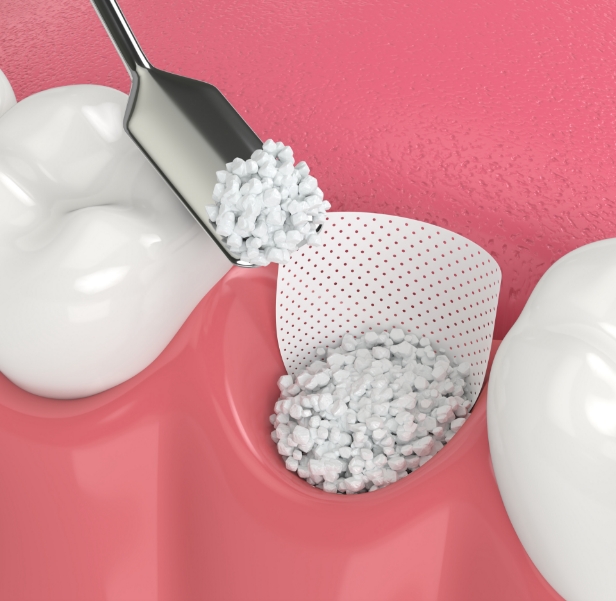Quality Dental Bone Grafting in Birmingham, AL
You might think the strength of your jawbone doesn't change and is set in stone from the time you finish growing. However, our jawbones are kept strong by everyday actions like chewing and biting, as well as having healthy teeth and gums. If you lose a tooth in an injury, have teeth pulled, or suffer from periodontal disease, you will begin losing bone mass in your jaw.
Using bone samples from your own body or a donor bank, we can replace missing bone needed for dental implants. Dr Maniscalco most frequently uses cadaver bone for bone grafting, which prevents the need for a second surgical site to harvest the bone. The cadaver bone has been decellularized, meaning that all of the cells have been removed, and all that is left is the calcium scaffolding for your body to use to create your own new bone. This allows us to replace bone that has been lost over the years, or to prevent bone loss around a socket after an extraction. With this foundation, you can receive dental implants, restore your jaw's natural function, and preserve your facial appearance. There are additional options as well for patient's who's religious beliefs do not allow for cadaver bone use.
At Maniscalco Oral Surgery and Implant Center, we are highly skilled at choosing the precise bone graft materials and placement to restore the quality and quantity of your jawbone. With our advanced materials and precision surgery, we're Birmingham's choice for the most successful and least stressful dental bone grafting procedures.



